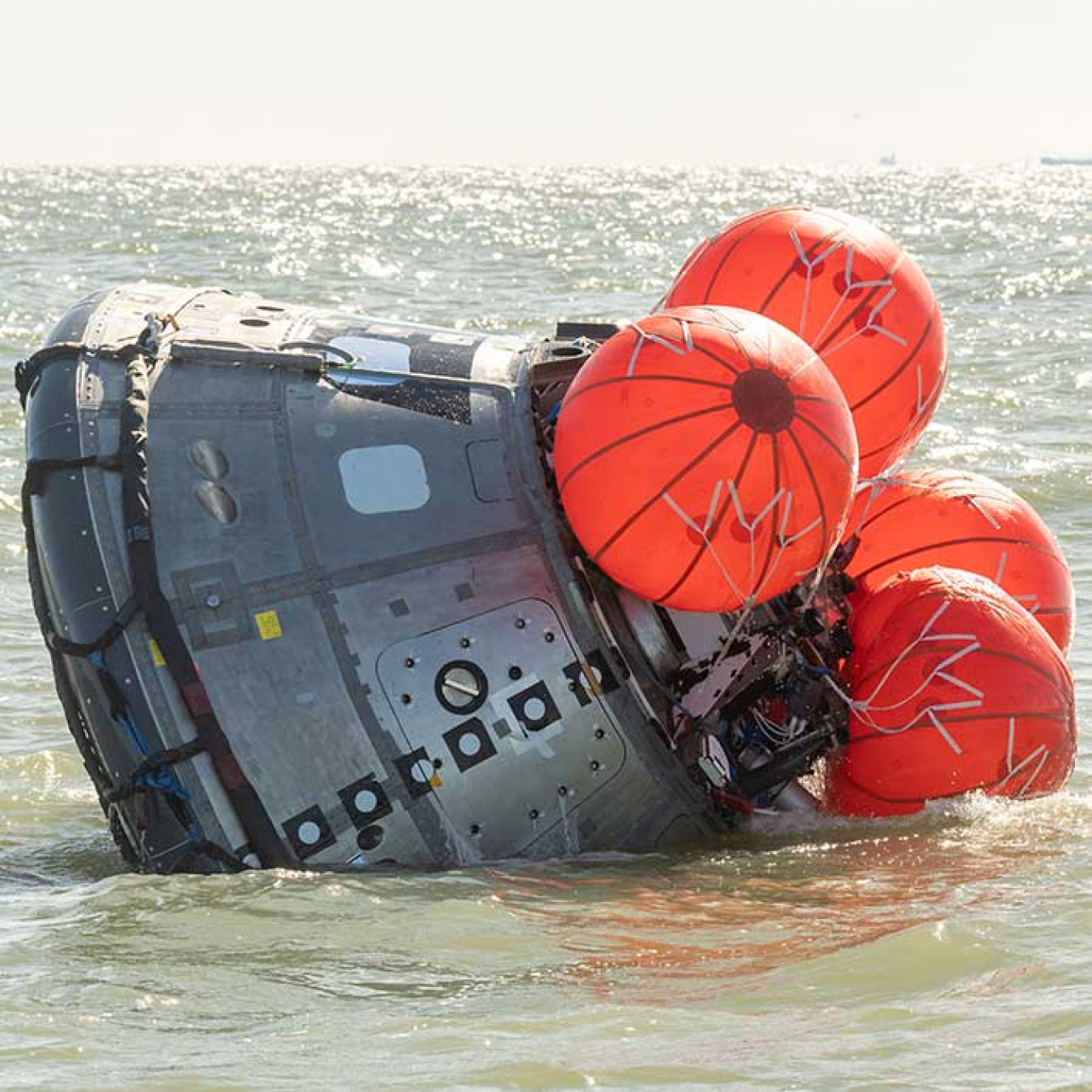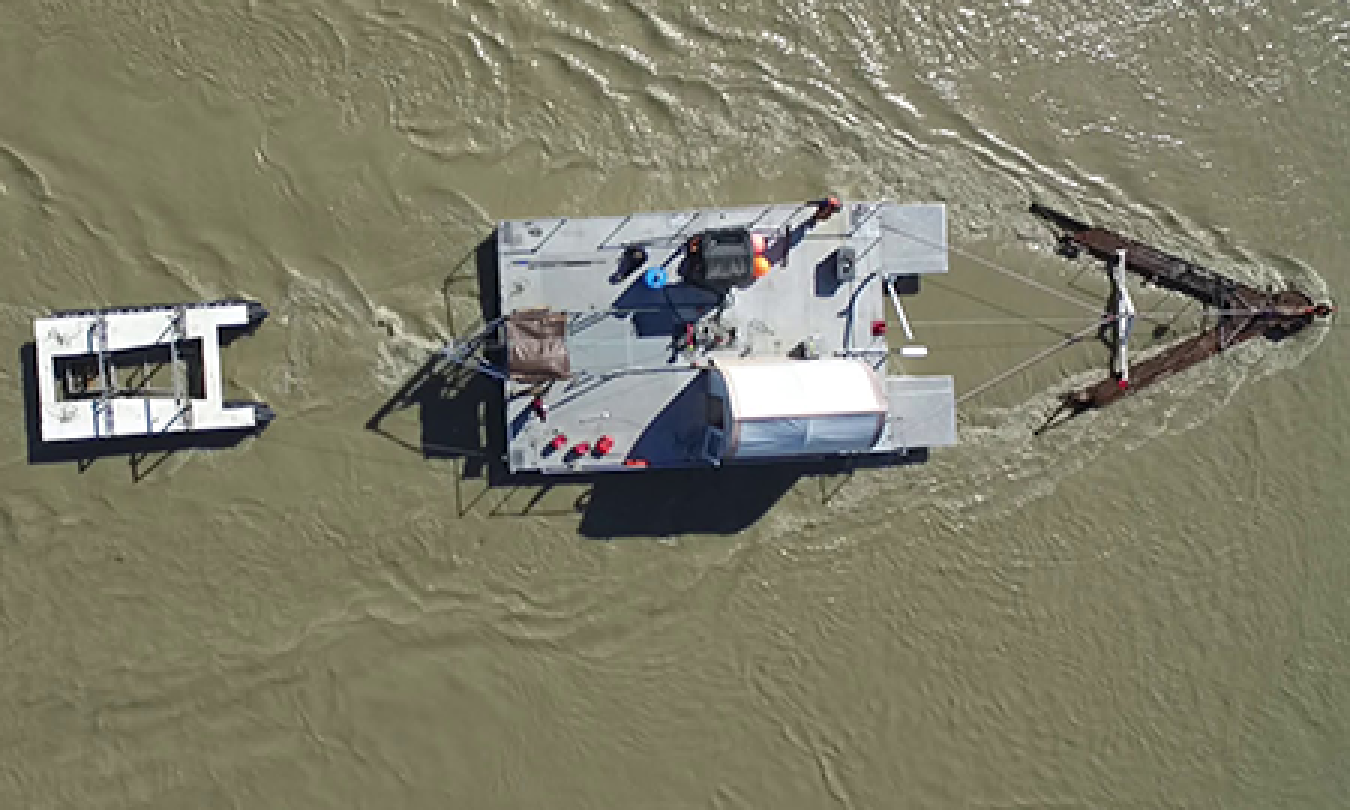Marine energy technologies hold incredible potential to help the United States meet its clean energy goals. The WPTO 2020–2021 Accomplishments Report highlights a few of the projects and teams working to advance these technologies.
Water Power Technologies Office
April 25, 2022An abundant, untapped renewable energy resource is constantly surging and churning through rivers and oceans. This power—called marine energy—is dependable and widely available. It’s in the rivers flowing through American cities and towns, along the coastlines where nearly 40% of Americans live, and even in the depths of the oceans that cover more than 70% of the planet.
Over the last year, the U.S. Department of Energy’s Water Power Technologies Office (WPTO) supported many efforts to advance promising marine energy research and technologies, which convert the power in waves, tides, and ocean and river currents into clean electricity.
“The power coursing through U.S. oceans and rivers is equivalent to nearly 60% of the country’s electricity needs,” said Tim Ramsey, marine energy program manager at WPTO. “We can’t practically harness all that power, but because marine energy is so reliable and predictable, it can be a valuable part of tomorrow’s 100% clean energy grid.”
The recently published WPTO 2020–2021 Accomplishments Report features a selection of the WPTO-supported marine energy advances from universities, industry partners, and national laboratories in the last year.

Developed by national laboratory researchers, the Wave Energy Converter SIMulator (WEC-Sim) can be used to simulate the ocean for more than marine energy purposes. Researchers are using WEC-Sim to model forces on and the motion of the Orion crew module in the ocean to ensure it lands upright upon its return to Earth.
Leaping From Laptop to Lab and Beyond
It’s not easy to bring an idea from the laptop to the lab and, eventually, the market. Marine energy developers need access to reliable software (to accurately assess designs), wave tank testing facilities (to see how prototypes perform), and experts (to accelerate technology development).
As summarized in the Accomplishments Report, WPTO funded an award-winning simulation software that calculates how wave energy converters might perform in the ocean, the first industry tests at a wave tank facility commissioned in 2021, and activities to prepare a wave-powered renewable energy device for ocean trials. Researchers even took a new kind of tidal turbine blade—which produces just as much energy as traditional thermoset epoxy resin blades but can be recycled after use—for a spin in New York City’s East River.

The Water Horse design harnesses energy from river currents with a technique called vortex shedding. A steel pendulum, like a small crane, hangs in flowing water. As the current rushes around the tip, that motion rocks the pendulum up and down, like a galloping horse.
Kites and Horses and Turbines, Oh My
The ocean is a harsh environment. Corrosive saltwater, profound depths, and high pressure all present challenges and overcoming them can be costly.
With WPTO’s help, researchers are developing cost-effective ways to build robust, resilient, and productive marine energy devices:
Take, for example, the remote Alaskan village Igiugig’s RivGen devices, which generate clean energy from turbines spinning in river currents. Another river-based design, called the Water Horse, could be an affordable, durable clean energy option for villages both remote and urban. And a very different design, which resembles an underwater kite, creates power in even slow-moving currents.
Busting Barriers Between Concept and Commercialization
Testing technology in the ocean is expensive and time-consuming work. That’s why it’s critical for marine energy developers to validate their devices before trekking to the open seas. To do that, developers need access to high-quality datasets, facilities, and experts.
In 2020–2021, WPTO’s Testing Expertise and Access for Marine Energy Research (TEAMER) program, which provides technology developers with access to testing facilities and leading experts, selected 37 new technical support projects. Researchers also advanced online tools to help developers process data about their devices and developed new technologies and methods for environmental monitoring. At the same time, construction progress continued at PacWave, which will be the first accredited, grid-connected, open-ocean wave energy testing facility in the United States. (Learn about the projects that will represent the first round of open-water testing at the PacWave South test site!)
Mapping the Future of Marine Energy
Marine energy technology is still in development, and developers can’t yet look to commercially successful projects for guidance. As a result, it’s key to maximize and share information that is available to support development and commercialization activities.
In 2020–2021, WPTO supported efforts to aggregate marine energy information (such as data, analyses, and reports) into a centralized system and to develop guidelines and best practices for sharing information across the industry. Researchers also developed a permitting and licensing toolkit to help accelerate and reduce the cost of marine energy development while protecting ocean environments.
Once marine energy technologies take off, the industry will also need to expand its workforce. In the last year, WPTO continued efforts to inspire this next generation by supporting projects focused on science, technology, engineering, and mathematics, as well as through the Marine Energy Collegiate Competition.
Power for the Blue Economy
Marine energy is a versatile energy source that can provide clean, accessible power for a booming blue economy, which includes offshore work, like international shipping, marine research, military missions, and ocean monitoring (to better anticipate extreme weather events, for example).
For example, in 2020–2021, portable and autonomous marine energy technologies, developed through WPTO’s Ocean Observing and Waves to Water prizes, got closer to providing energy for marine exploration and data collection, as well as for power and clean drinking water for communities recovering from natural disasters. (Learn about the Waves to Water Prize winners announced earlier this month!) At the same time, WPTO and numerous partners provided technical assistance to remote, island, and islanded communities to help them develop strategies to transition to a clean energy future.
Marine energy technologies hold incredible potential to help the United States meet its clean energy and decarbonization goals. The WPTO 2020–2021 Accomplishments Report highlights just a few of the projects and teams working to advance these technologies to support the clean energy future.
Learn more about marine energy and explore additional marine energy accomplishments in the WPTO 2020–2021 Accomplishments Report. Stay up to date with the latest marine energy funding opportunities, events, and news by subscribing to the monthly Water Column and the bimonthly Water Wire newsletters.

